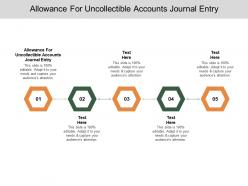E. Schematic of experimental design for analysis of paralog upregulation frequency for 27 knockout targets in mouse naive embryonic stem cells (ESC), tailored from Lackner et al., 2021. A complete understanding of the human immune system’s function in tumor development has revealed the existence of distinct cell populations with diverse impacts 23. This analysis investigates the affect of EME1 genetic changes on many features of the immune system in tumor settings. Recent investigations have manifested a robust correlation between elevated levels of myeloid-derived suppressor cells (MDSCs) and antagonistic consequences in cancer and resistance to immunotherapies.
Everolimus inhibits kinase receptors by blocking mTOR protein, whereas Dioscin inhibits the STAT3 signaling pathway in human hepatocellular carcinoma cells. The parameter units (spanning eight or 9 parameters or parameter ratios, relying on the model and assumptions) for every set of simulations are described in Desk S4. B. Example simulation output and inference of single-cell expression distributions from pseudo-single-cells taken each 300 time-steps.
Publication Sorts
It proposes EME1 as a promising biomarker and therapeutic target across a quantity of most cancers types. The recognized drug candidates warrant further in vitro and in vivo validation for potential repurposing in EME1-targeted cancer remedy. D. List of CRISPR targets with a quantity of paralogs demonstrating giant increases in paralog expression.
The loss of Mus81, EME1, or Mms4 (Methyl Methanesulfonate Sensitivity 4) triggered meiotic failure due to improper DNA processing following double-strand breaks (DSBs)8,9,10. Current investigations have emerged that EME1 contributes to regulating cell quantity, proliferation, and migration processes linked to most cancers recurrence, significantly in bladder most cancers (BLCA), glioma, and prostate cancer cells 11,12,13. Larger EME1 expression has been connected with worse survival outcomes in pancreatic most cancers 14. In esophageal adenocarcinoma, MacGregor et al. discovered that elevated EME1 expression, analyzed from mRNA ranges of 280 DNA restore genes in patients before therapy, correlated with lowered general survival (OS), highlighting EME1 as a prognostic biomarker 15.
When obtainable, we used author-provided gene expression change calculations based on DESeq2 (for results from 52). For all remaining datasets, for which DESeq2 outcomes weren’t already out there, the authors did present mapped count data on GEO and/or they have been available on GREIN. For these count-based outcomes we implemented DESeq2 ourselves, utilizing the PyDESeq2 bundle, utilizing default settings, evaluating knockout samples in opposition to the matched controls from their respective research 104.
We used the clusterProfiler R bundle v3.12.0 for gene ontology over-representation testing 55.
Oncogenic proteins often exhibit heightened expression in tumor tissues in contrast prevalence of and gene regulatory constraints with their normal counterparts, prompting us to gauge the specific expression patterns of EME1 in several human malignancies. Our findings unveiled a significant rise in EME1 expression across a spectrum of tumor types, together with BLCA, BRCA, CHOL, COAD, ESCA, GBM, HNSC, KIRC, KIRP, LIHC, LUAD, LUSC, PRAD, rectum adenocarcinoma (READ), STAD, THCA, UCEC, CESC, DLBC, LGG, SARC, THYM, and UCS. G. Enrichment of trimodal gene expression distribution shapes after sampling parameter units from the subspace versus from the total parameter area.
Further File 3: Evaluation Historical Past
- The loss of Mus81, EME1, or Mms4 (Methyl Methanesulfonate Sensitivity 4) brought on meiotic failure as a result of improper DNA processing following double-strand breaks (DSBs)8,9,10.
- Though Troxerutin complexes showed some variability, SASA assessments confirmed overall stability during the simulation interval.
- In esophageal adenocarcinoma, MacGregor et al. discovered that elevated EME1 expression, analyzed from mRNA ranges of 280 DNA restore genes in patients earlier than therapy, correlated with decreased overall survival (OS), highlighting EME1 as a prognostic biomarker 15.
- We outlined a European-ancestry cohort as individuals who most resembled the NFE (non-Finnish European) population as labeled within the gnomAD v.3.1 dataset55.
- Previous research have advised that EME1 dysregulation might result in genomic instability, selling oncogenesis in a extra context-dependent method than different endonucleases 16, 17.
MD simulations supplied further insight into protein–ligand complicated stability, with RMSD analyses displaying stable interactions between EME1 and the investigated ligands. Although Troxerutin complexes confirmed some variability, SASA assessments confirmed overall stability through the simulation period. B. Scatter plots and correlation between chosen abstract statistics of B distributions within the heterozygous genotype and model parameters. A. Three random, representative autocorrelation plots for per-100-timestep samples from gene expression traces in the wildtype genotype. Consistent with prior studies, we also explored a variety of values of Hill coefficient n, to ensure that we adequately sampled over completely different steepness levels of the Hill operate representing regulatory relationships 54. As previously described, we make use of reaction propensities underneath the idea of the law of mass action, the place every propensity perform pi(x)dt gives the chance of response Ri occurring in the time step dt, for a small dt.
In one other set of simulations, we sampled over values of a brand new ratio describing how expression varies between A’1-directed and A’2-directed B-active states. However, it is imperative to judge these findings within the framework of the exclusion criteria employed within the knowledge analysis, which predominantly thought of untreated tumors. The intentional omission of certain variables may influence the reported sample of EME1 expression in numerous cell varieties.
All CRISPR targets with greater than 1 paralog within the top-100 listing (see Methods) and with no less than 10% of all annotated paralogs in the top-100 lists. The research highlights the potential for repurposing FDA-approved drugs as EME1 inhibitors, warranting additional experimental validation to evaluate their therapeutic efficacy and safety profiles. Everolimus and Dioscin, acknowledged https://www.bookkeeping-reviews.com/ for his or her anti-cancer properties, additionally exhibited favorable binding affinities, indicating their potential as EME1 inhibitors.
EME1 varieties a heterodimer with MUS81, which performs a important function in resolving DNA double-strand breaks and replication fork collapse, which is incessantly dysregulated in most cancers. Initial pan-cancer screening utilizing TCGA and GEPIA2 revealed that EME1 is considerably upregulated in a number of cancer types, including LIHC, KIRC, LUAD, and UCEC, with sturdy prognostic relevance. Unlike different DNA restore endonucleases, EME1 showed constant optimistic correlation with immunosuppressive markers, particularly MDSC (Myeloid-Derived Suppressor Cell) infiltration and immune checkpoint genes. Previous research have instructed that EME1 dysregulation may lead to genomic instability, promoting oncogenesis in a extra context-dependent manner than different endonucleases 16, 17.













